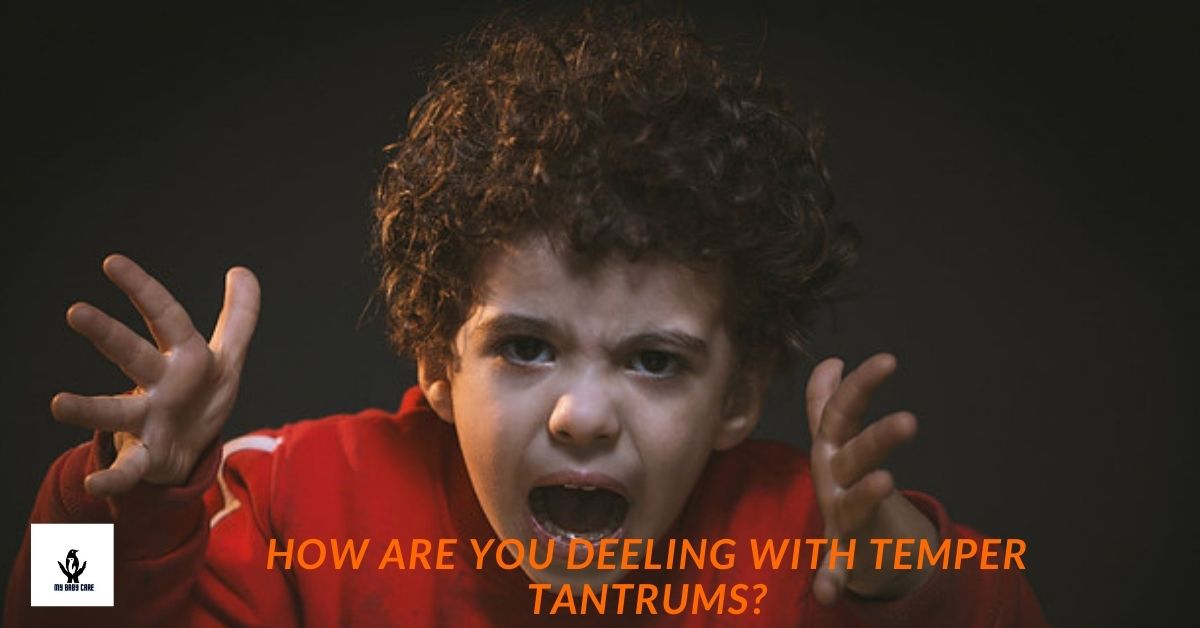Tantrums are a natural part of growing up. Dealing with temper tantrums is an advanced skill for parents. Most children have fewer tantrums as they grow older and researchers found that children with temper tantrums are easier to use language to communicate what they want. They also have a good understanding of the surrounding things, what’s happening around them, and many more things about how the world works.
Oh, the way you deal with tantrums is important. If you shout and smack your child he or she will become worse. They started to struggle to deal with the emotions they ignored completely. That will enhance their anxiety.
The commonest problem of the child’s behavior is the parent’s mirror reflection. So adults should have a sound understanding of how to deal with toddlers’ tantrums and put a strong foundation in their lives, especially at the age of 12-36 months.
If the foundation is strong then the building is strong throughout the existing time.
Table of Contents
What is tantrum
Tantrums can be present in various forms.
- Shouting
- Screaming
- Hitting
- Bang the head against the wall
- Holding breath and turning blue.
Children temper tantrums mainly because they need your attention. Your response is going to decide how the tantrum is going to progress or get worsen with time.
What should you do at a glance, when dealing with temper tantrums
If your child is throwing tantrums, It means the child is seeking attention.
MAIN ADVICE NOR THE CHILD WHEN THEY THROW THE TANTRUMS.
Responding to the tantrum shows indirectly giving attention to the child.
WHEN THE TANTRUM GOES OUT OF THE CONTROL,YOU SHOULD STOP RESPONDING TO THE CHILD AND WHAT THEY ARE ASKING.
Then they try to show the following behaviors
- 1st day-throw tantrum 2 hours and stop
- 2nd day- they might scream for 1 hour and stop the behavior and silent
- 3rd day-child realized that they get zero attention. Gradually he stops. They assume this is totally waste of time and should be stopped.
What is the severest form of a tantrum?
The breath-holding pattern is the most severe. They turn blue without breathing
What should you do in dealing with temper tantrums
Don’t panic. Don’t rush towards the child and raise. If you can sprinkle some water onto the face and try to make the child alert. If you do the same thing with water two to three times when the child behaves like this, the next time he/she won’t do this again.
Sometimes in social places like supermarkets, malls, play areas, and public places, some children try to temper tantrums. This odd social behavior is a mirror image of home behavior. So try to change the home behavior as much as possible. Then the child will adapt to the newly created situation.
Common basic tips for managing tantrums
Ignore
Toddlers always love to be in the center of attention. They are taking the attention irrespective of the positive or negative attention they are getting. if the tantrum is small or moderate, let the child be safe somewhere he/she won’t hurt herself. Simply leave the room and wait for the tantrum to subside.
Distract
At the early stage of the tantrum, distraction is a good strategy. It is a good way of stopping a full-blown attack. If you are outside, try to show something you can see and give an attractive explanation or demonstration about the thing you point to the child. Try to say, “wow, it is a pink bus? or use funny tones or facial expressions with the intention of talking to the child. So try to change the child’s annoying behavior pattern by converting his/her mind into another direction creatively.
Be consistent
Never make a threat that you can’t follow through. If you say, “I am going to leave you here forever,” or “we won’t go on holiday.” Such types of statements won’t work in the long run. Stick to logical consequences for your Child’s actions. Something that is relevant to the situation you are in. For example, “you could take a favorite toy away for a short while”.that kind of logical statement might work.
Be prepared
if you know that you are entering into a place where the tantrums are more, be prepared and work out a plan before going in. For example, if the child often has a meltdown at a place like a supermarket, tell her beforehand that she can select her favorite toy at the end of shopping with her mom
Other coping strategies for tantrums
- Coping with tantrums can be very stressful.
- Try to put your pre-plan into action when the tantrums happen.
- You can’t control all the emotions or the behaviors of your child directly. You can ensure the safety notes of your child and guide for productive things. Then the tantrums are less likely to happy
- Don’t think that your child is purposely throwing tantrums to make you upset or that he/she has the intention to do that. Realize they are stuck in a habit. I have to build up my skills in copying these situations.
- Don’t laugh at tantrums. If so, it might reward your child with attention. It might also upset your child even more if they think you are laughing at them. So try to keep a sense of humor.
- Ignore if other people give you dirty looks.
Tantrums dos’ and don’ts
- Don’t pay attention to the emotions and feelings of your child. Then they have a sense that they are not being understood so frustration will come up try to show “I know that you feel sad “or “I can see you are not happy with that”
- Don’t let your child think that he or she has no control. Chat simple choices with them. Offer them foods to eat or some clothes to wear.
- If you want to leave a certain place give the child a few warnings that you should go in 10 minutes or half an hour. Don’t give surprises to the child. Make them aware of what you are going to do.
- Don’t shout back to your children. Too much healing from you sets a bad example and makes tantrums worse.
- Do make sure that your child has enough time to do a few words during the day. For example, dancing to music or playing in the playground.
- Don’t keep saying no. Try “later”,” after breakfast”, “after the nap” or “another day”
- Keep clear routines in the day. So that your child knows what to expect and what is coming next.
- Don’t wait till things get out of hand if you notice the tantrums are about to come it’s better to step in and diffuse the situation.
- Try to give more attention and lots of praise to your child when good things happen all the time.
- Don’t ever give in. If you have said no, stick with no. If a tantrum resulted in you changing your mind and saying yes your child has learned that this is a good boy to get results and will try it again.
- Always plays dangerous so breakable things away from your child and prove to them the house is a hazard-free environment
Conclusion
IF YOUR CHILD HAS ADDITIONAL NEEDS LIKE AUTISM SPECTRUM DISORDER AND THEY ARE HAVING EVEN MORE TANTRUMS. SO MAKE PROPER ADVICE DEALING WITH TEMPER TANTRUMS, FROM RELEVANT PROFESSIONALS LIKE PAEDIATRICIANS, OCCUPATIONAL THERAPISTS, AND SPEECH THERAPISTS.
Remember all children have tantrums instead of focusing on how to deal with tantrums. Try to focus your feet on parenting and maximize your attempts to raise an independent child.


This is a brilliant article on temper tantrums. Being the mother of 4 grown children, I totally agree with your advice. At the moment we have our nearly 4 year old granddaughter living with us and she is having temper tantrums for attention. We try to ignore her where possible and they are becoming less and less.
Thank you Lisa for your feedback. i highly appreciate your comment on real-life experiences. keep in touch with us for more valuable information.